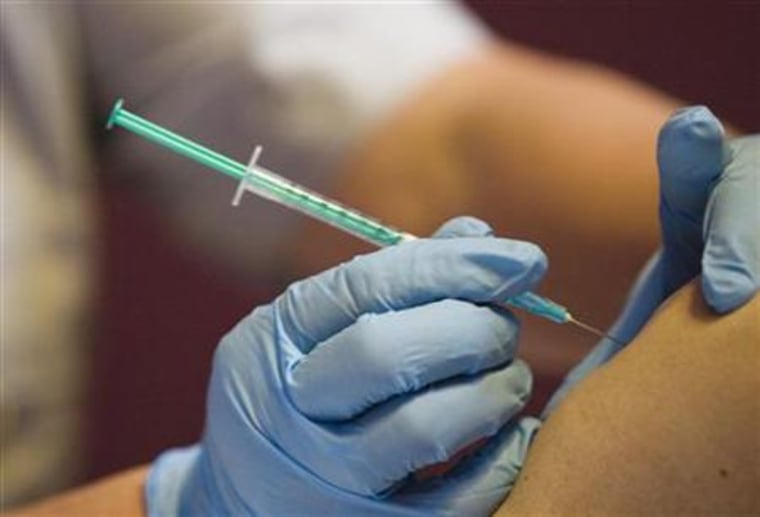The World Health Organization is recommending that swine flu be added to the regular flu vaccine next season.
WHO said in a statement Thursday that it held a meeting this week to decide which flu strains should be recommended to drug makers for their vaccines during the northern hemisphere's next flu season, which begins in the fall.
Flu vaccines have three virus strains — which experts decide on after estimating which strains made the most people sick last season. The other strains are H3N2 — which like H1N1 is a type of influenza A — and influenza B.
Last year, the swine flu pandemic virus, or H1N1, emerged too late to be added to the regular flu vaccine and a new vaccine was needed.
Some countries, including Germany, France and the United States, cut back their orders of the H1N1 swine flu jab after people were slow to take them up. The fact that people needed only one dose, and not two as originally thought, also contributed to oversupply.
"If they have the vaccine strain which is already made up and can be used, then they're ahead of the game," Keiji Fukuda, the WHO's top influenza expert, told Reuters after a public WHO session attended by representatives of pharmaceutical companies.
Fukuda said national health regulatory authorities would have to decide whether to combine the three strains into a single "trivalent" shot, administer three separate vaccines, or use a separate H1N1 shot and combine the other two in one shot.
Flu vaccine makers such as GlaxoSmithKline and Sanofi-Aventis need the guidance to start formulating vaccines for the northern hemisphere's 2010/11 vaccine mix. The flu season usually begins in November.
The decision was more complicated this year because of the pandemic, declared by the WHO last June.
That raised the question of whether to replace the current H1N1 seasonal strain with the pandemic strain — also known as California 7 — which is now circulating more widely.
"Based on the analyses it is expected that A (H1N1) pandemic 2009, A (H3N2) and B viruses will co-circulate in the northern hemisphere 2010-2011 with the likelihood that the pandemic A (H1N1) 2009 viruses will predominate," the WHO said in a statement issued on Thursday.
Seasonal H1N1 viruses were "unlikely to circulate at significant levels during the 2010-2011 northern hemisphere season; hence it has not been recommended for inclusion," it said.
The composition of the southern hemisphere's separate seasonal vaccine for 2010 was announced last September and also contains the H1N1 pandemic strain.
